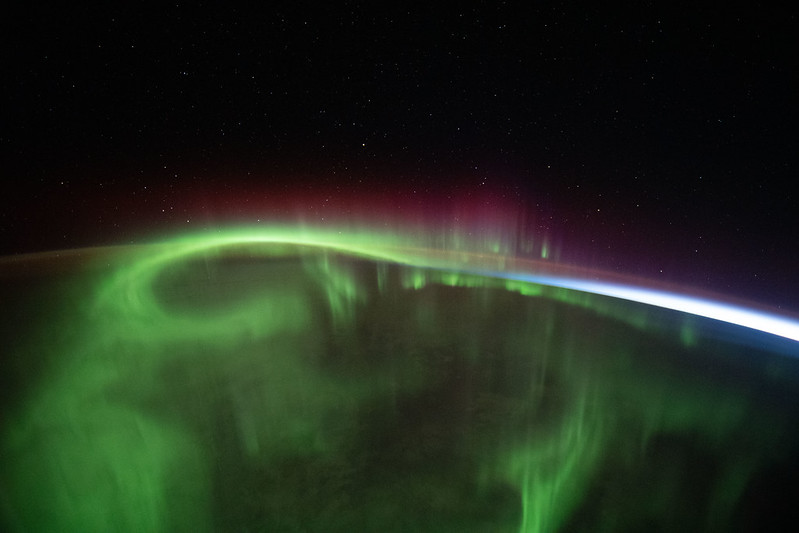Astronauts capture stunning aurora from International Space Station
The sky show took place over Antarctica and New Zealand.
Astronauts got to see an amazing display of southern lights over New Zealand and Antarctica earlier this month.
Spectacular images and footage of the green-hued aurora flowed from the International Space Station, where the Expedition 66 crew got a view of the Indian Ocean show and shared it on social media.
"I caught this aurora just as orbital sunrise was beginning. Breathtaking!" wrote NASA astronaut Shane Kimbrough on Oct. 12, two days after the show took place. With his tweet came a sweeping view of auroras over the barely lit limb of the Earth.
Auroras take place when charged particles from the sun, known as the solar wind, flow along the magnetic field lines of Earth and interact with our atmosphere. As the particles are deflected by the magnetic field to our planet's poles, their interactions with the atmosphere dumps in energy and causes the atmosphere to glow.
Amazing auroras: Stunning northern lights photos

I caught this aurora just as orbital sunrise was beginning. Breathtaking! pic.twitter.com/8km6i4M5VjOctober 12, 2021
The sun is somewhat near the beginning of a solar cycle, which lasts about 11 years. Each cycle has a "maximum," at which point there is more solar activity manifested as solar flares and coronal mass ejections, which can cause auroras if any particles flow in the right direction towards Earth.
While we're not near that maximum phase right now, the astronauts had a great viewpoint from their orbit at approximately 250 miles (400 km) above Earth, with no interfering atmosphere in the way. That said, French astronaut Thomas Pesquet said eventually the sun stopped observations.
Get the Space.com Newsletter
Breaking space news, the latest updates on rocket launches, skywatching events and more!
"The view in this #timelapse passes the #aurora to marvel at the stars and then be overwhelmed by a sunrise," Pesquet wrote in a tweet posted on Sunday (Oct. 17).
Although the aurora is beautiful, it could accompany a real danger for astronauts: radiation. NASA has lifetime radiation protocols in place for its spaceflyers to protect against ill effects of radiation events in orbit, which can be associated with conditions such as cancer. The agency is also investigating the exposure for astronauts at future spaceflight destinations such as the moon and Mars.
💚🌊 Une aurore polaire, des étoiles et l'éblouissement final du lever de soleil : que demander de plus ? #BonneNuit.💚🌊 The view in this #timelapse passes the #aurora to marvel at the stars and then be overhwelmed by a sunrise. #MissionAlpha pic.twitter.com/M7LDGtqd5lOctober 17, 2021
Follow Elizabeth Howell on Twitter @howellspace. Follow us on Twitter @Spacedotcom and on Facebook.
Join our Space Forums to keep talking space on the latest missions, night sky and more! And if you have a news tip, correction or comment, let us know at: community@space.com.

Elizabeth Howell (she/her), Ph.D., was a staff writer in the spaceflight channel between 2022 and 2024 specializing in Canadian space news. She was contributing writer for Space.com for 10 years from 2012 to 2024. Elizabeth's reporting includes multiple exclusives with the White House, leading world coverage about a lost-and-found space tomato on the International Space Station, witnessing five human spaceflight launches on two continents, flying parabolic, working inside a spacesuit, and participating in a simulated Mars mission. Her latest book, "Why Am I Taller?" (ECW Press, 2022) is co-written with astronaut Dave Williams.









